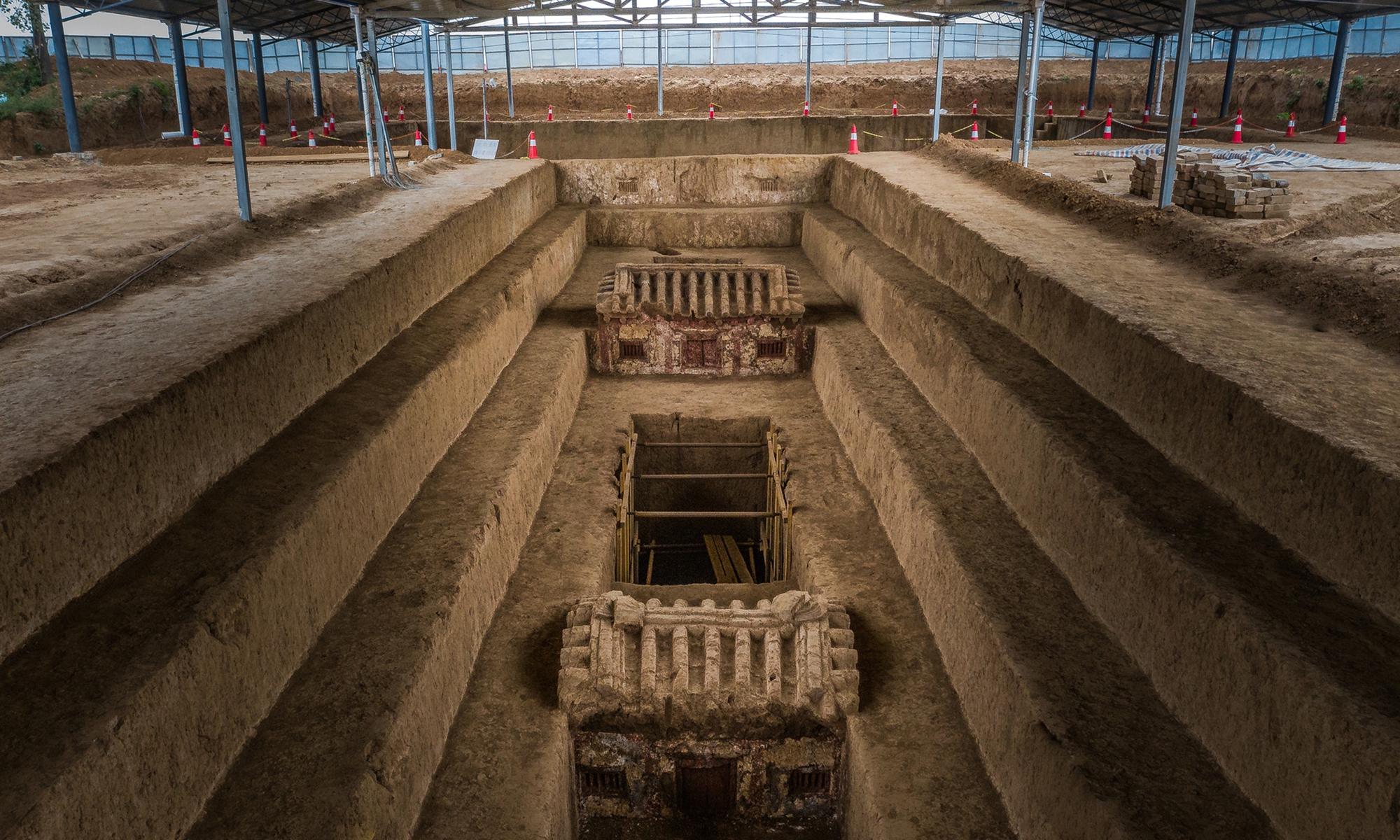Editor's Note:
From a prehistoric cave with evidence of early use of fire, to the capital city of a regional government from the 13th century, China unveiled its top 10 archeological discoveries in 2020 on Tuesday. Photo: National Cultural Heritage Administration
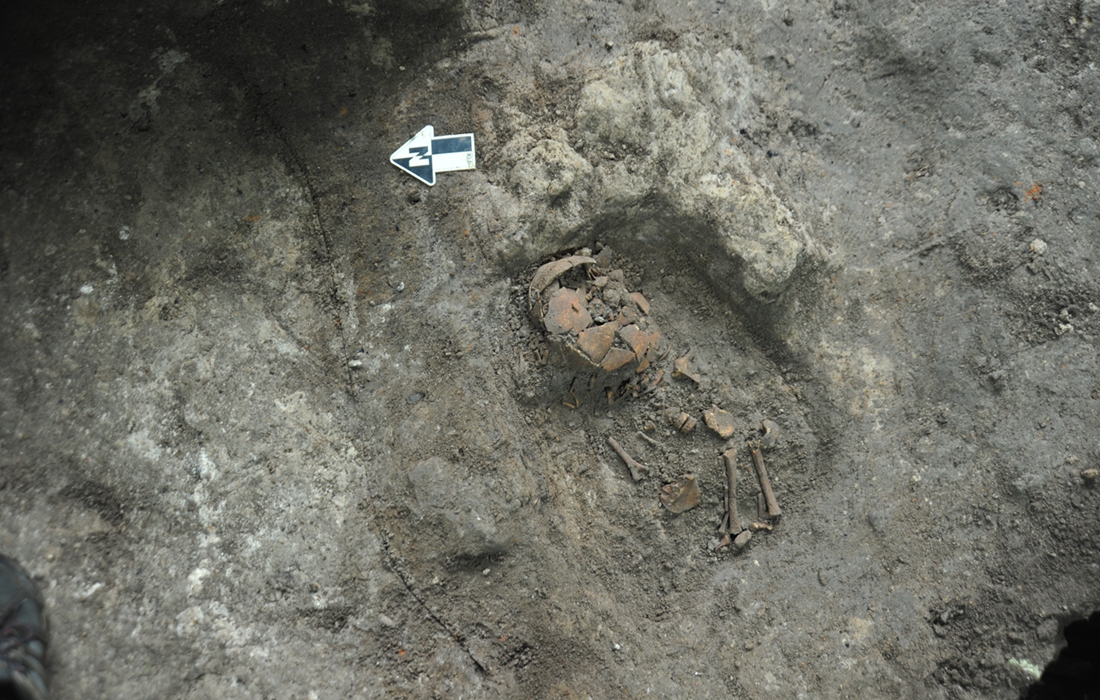 Photo shows the Zhaoguo Cave site and discoveries from the site in Gui'an New Area, Guizhou province. The site dates back to between 45,000 to 12,000 years ago, spanning through the Paleolithic and Neolithic periods. The site provides clues to the early use of fire and polished stone tools in the late Paleolithic period in Southwest China. Photo: National Cultural Heritage Administration
Photo shows the Zhaoguo Cave site and discoveries from the site in Gui'an New Area, Guizhou province. The site dates back to between 45,000 to 12,000 years ago, spanning through the Paleolithic and Neolithic periods. The site provides clues to the early use of fire and polished stone tools in the late Paleolithic period in Southwest China. Photo: National Cultural Heritage Administration 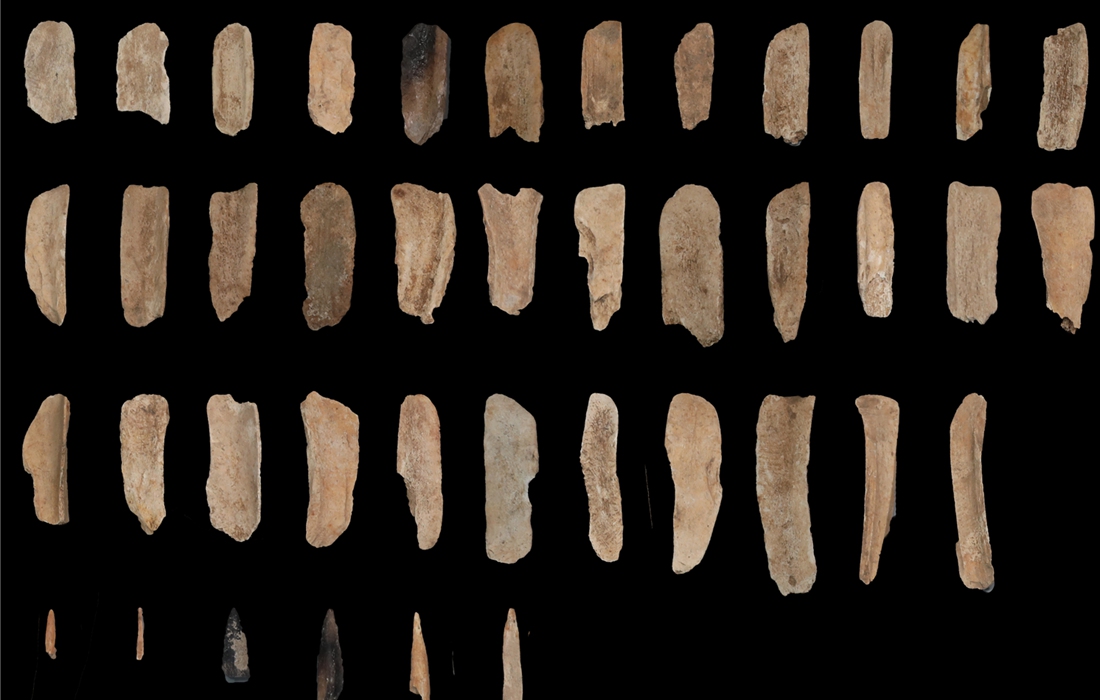 Photo shows the Zhaoguo Cave site and discoveries from the site in Gui'an New Area, Guizhou province. The site dates back to between 45,000 to 12,000 years ago, spanning through the Paleolithic and Neolithic periods. The site provides clues to the early use of fire and polished stone tools in the late Paleolithic period in Southwest China. Photo: National Cultural Heritage Administration
Photo shows the Zhaoguo Cave site and discoveries from the site in Gui'an New Area, Guizhou province. The site dates back to between 45,000 to 12,000 years ago, spanning through the Paleolithic and Neolithic periods. The site provides clues to the early use of fire and polished stone tools in the late Paleolithic period in Southwest China. Photo: National Cultural Heritage Administration 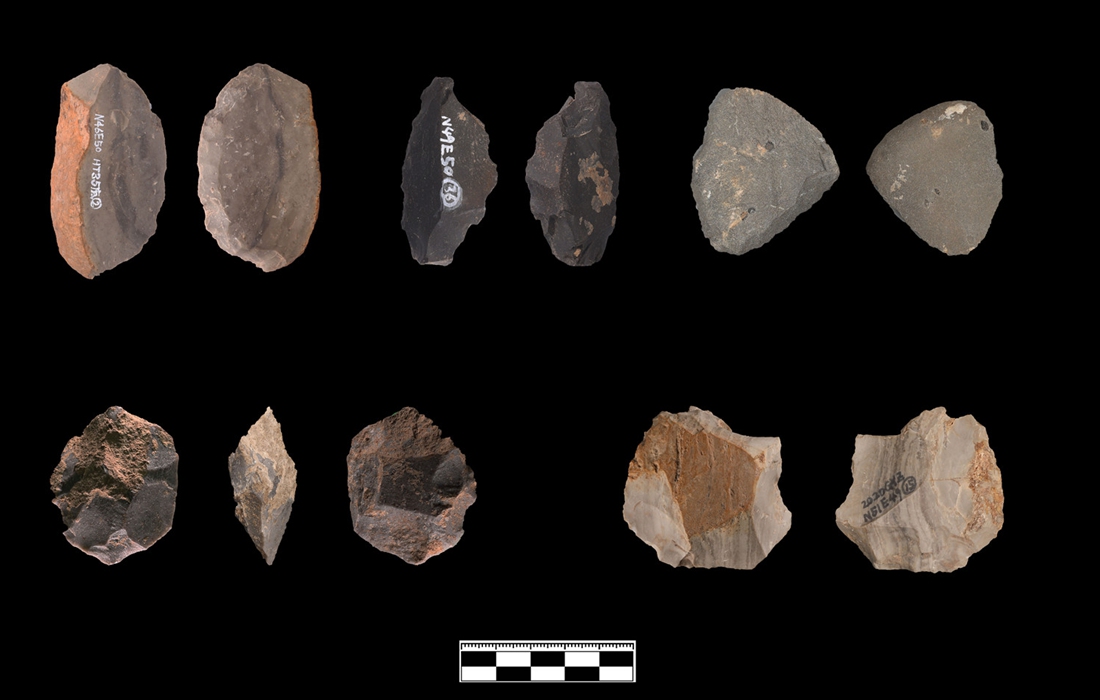 Photo shows the Zhaoguo Cave site and discoveries from the site in Gui'an New Area, Guizhou province. The site dates back to between 45,000 to 12,000 years ago, spanning through the Paleolithic and Neolithic periods. The site provides clues to the early use of fire and polished stone tools in the late Paleolithic period in Southwest China. Photo: National Cultural Heritage Administration
Photo shows the Zhaoguo Cave site and discoveries from the site in Gui'an New Area, Guizhou province. The site dates back to between 45,000 to 12,000 years ago, spanning through the Paleolithic and Neolithic periods. The site provides clues to the early use of fire and polished stone tools in the late Paleolithic period in Southwest China. Photo: National Cultural Heritage Administration 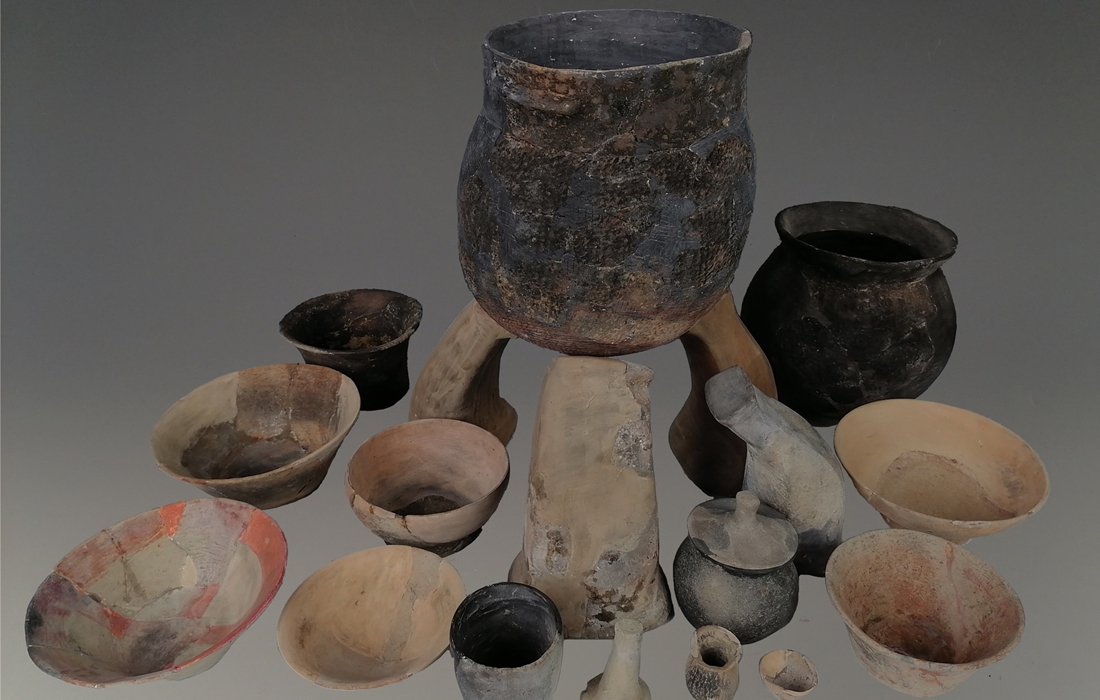 Photo shows discoveries from the Jingtoushan shell mound site, Yuyao, Zhejiang province, which dates back to 8,000 years ago. The site is the oldest shell mound site discovered along the coast of China. It offers clues to research on prehistoric environmental change in coastal areas. Photo: National Cultural Heritage Administration
Photo shows discoveries from the Jingtoushan shell mound site, Yuyao, Zhejiang province, which dates back to 8,000 years ago. The site is the oldest shell mound site discovered along the coast of China. It offers clues to research on prehistoric environmental change in coastal areas. Photo: National Cultural Heritage Administration 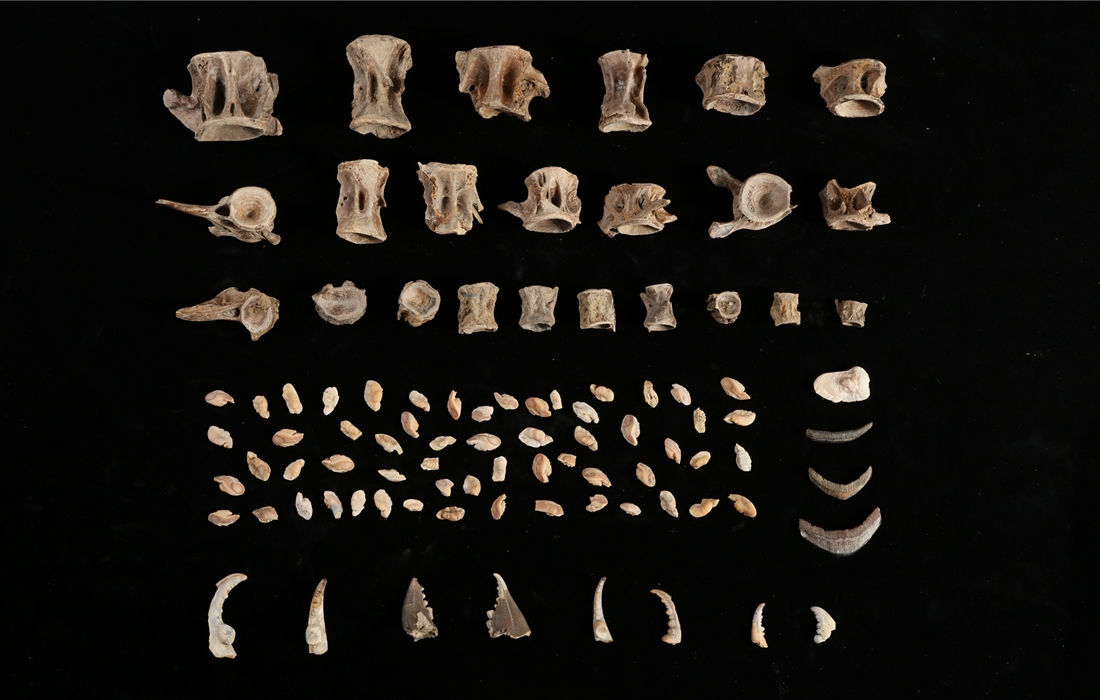 Photo shows discoveries from the Jingtoushan shell mound site, Yuyao, Zhejiang province, which dates back to 8,000 years ago. The site is the oldest shell mound site discovered along the coast of China. It offers clues to research on prehistoric environmental change in coastal areas. Photo: National Cultural Heritage Administration
Photo shows discoveries from the Jingtoushan shell mound site, Yuyao, Zhejiang province, which dates back to 8,000 years ago. The site is the oldest shell mound site discovered along the coast of China. It offers clues to research on prehistoric environmental change in coastal areas. Photo: National Cultural Heritage Administration 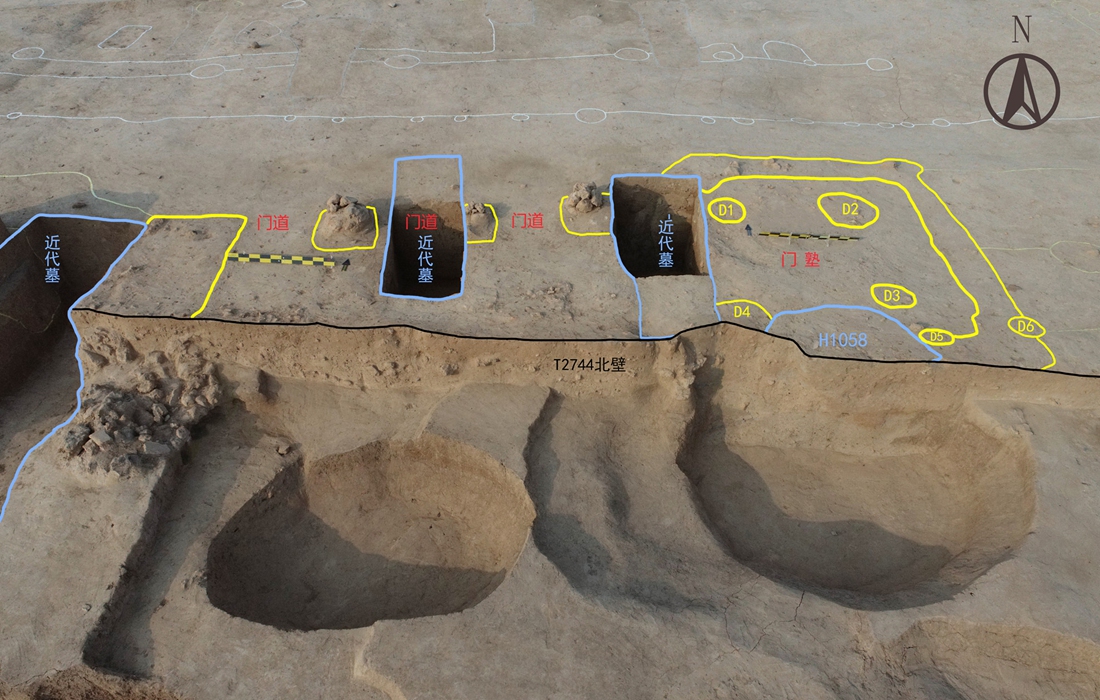 Photo shows the Shuanghuaishu heritage site and discoveries that date back 5,300 years ago in Gongyi, Henan province. The Shuanghuaishu heritage site is the largest residential complex of the middle and late Yangshao culture discovered in the Yellow River basin, filling the gap of the origin of Chinese civilization. Photo: National Cultural Heritage Administration
Photo shows the Shuanghuaishu heritage site and discoveries that date back 5,300 years ago in Gongyi, Henan province. The Shuanghuaishu heritage site is the largest residential complex of the middle and late Yangshao culture discovered in the Yellow River basin, filling the gap of the origin of Chinese civilization. Photo: National Cultural Heritage Administration 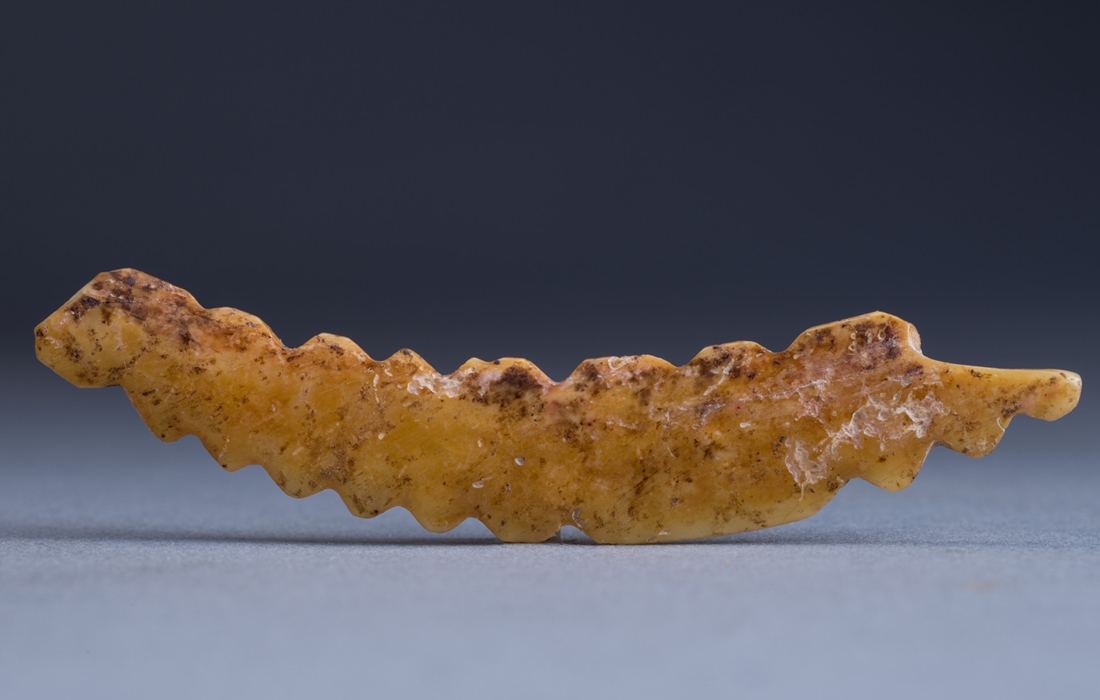 Photo shows the Shuanghuaishu heritage site and discoveries that date back 5,300 years ago in Gongyi, Henan province. The Shuanghuaishu heritage site is the largest residential complex of the middle and late Yangshao culture discovered in the Yellow River basin, filling the gap of the origin of Chinese civilization. Photo: National Cultural Heritage Administration
Photo shows the Shuanghuaishu heritage site and discoveries that date back 5,300 years ago in Gongyi, Henan province. The Shuanghuaishu heritage site is the largest residential complex of the middle and late Yangshao culture discovered in the Yellow River basin, filling the gap of the origin of Chinese civilization. Photo: National Cultural Heritage Administration 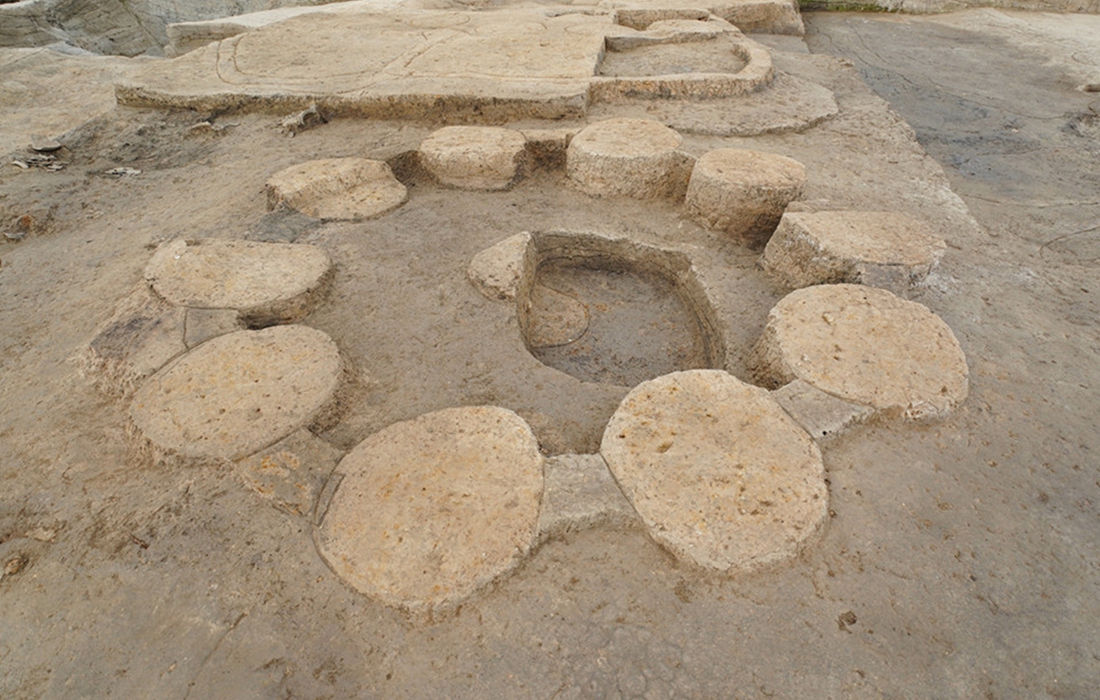 Photo shows the Shizhuang heritage site in Zhoukou, Henan province (2000 to 1700 BC). The site is the earliest-known fortified city of barns in China, and provides materials for research on the management of grain reserves in ancient China. Photo: National Cultural Heritage Administration
Photo shows the Shizhuang heritage site in Zhoukou, Henan province (2000 to 1700 BC). The site is the earliest-known fortified city of barns in China, and provides materials for research on the management of grain reserves in ancient China. Photo: National Cultural Heritage Administration 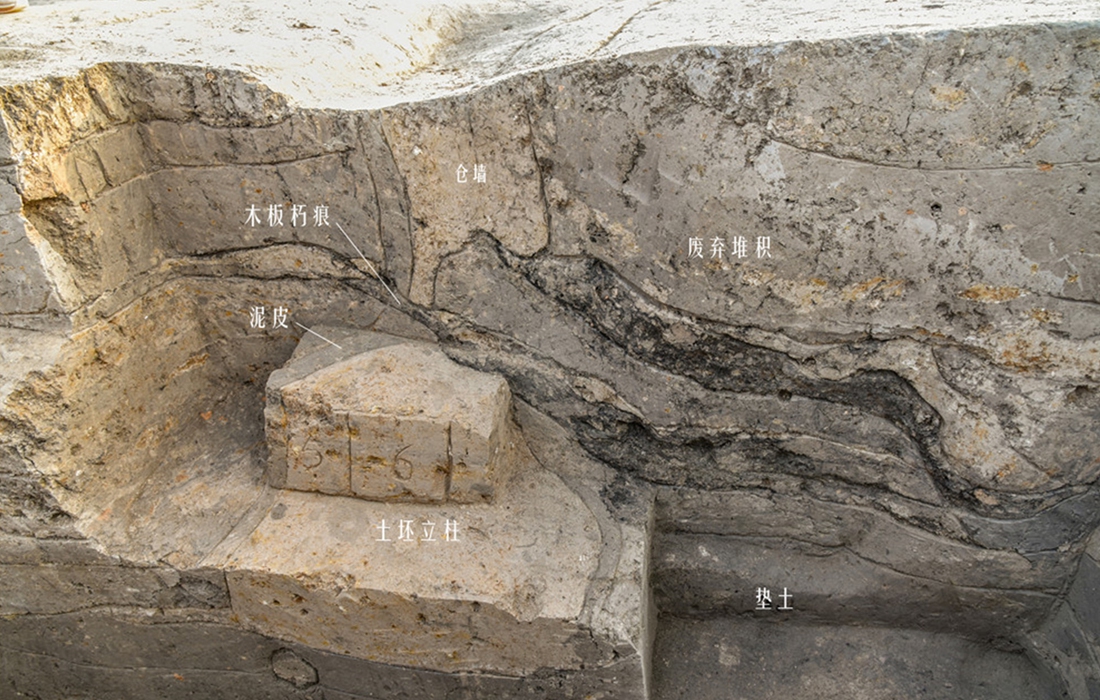 Photo shows the Shizhuang heritage site in Zhoukou, Henan province (2000 to 1700 BC). The site is the earliest-known fortified city of barns in China, and provides materials for research on the management of grain reserves in ancient China. Photo: National Cultural Heritage Administration
Photo shows the Shizhuang heritage site in Zhoukou, Henan province (2000 to 1700 BC). The site is the earliest-known fortified city of barns in China, and provides materials for research on the management of grain reserves in ancient China. Photo: National Cultural Heritage Administration 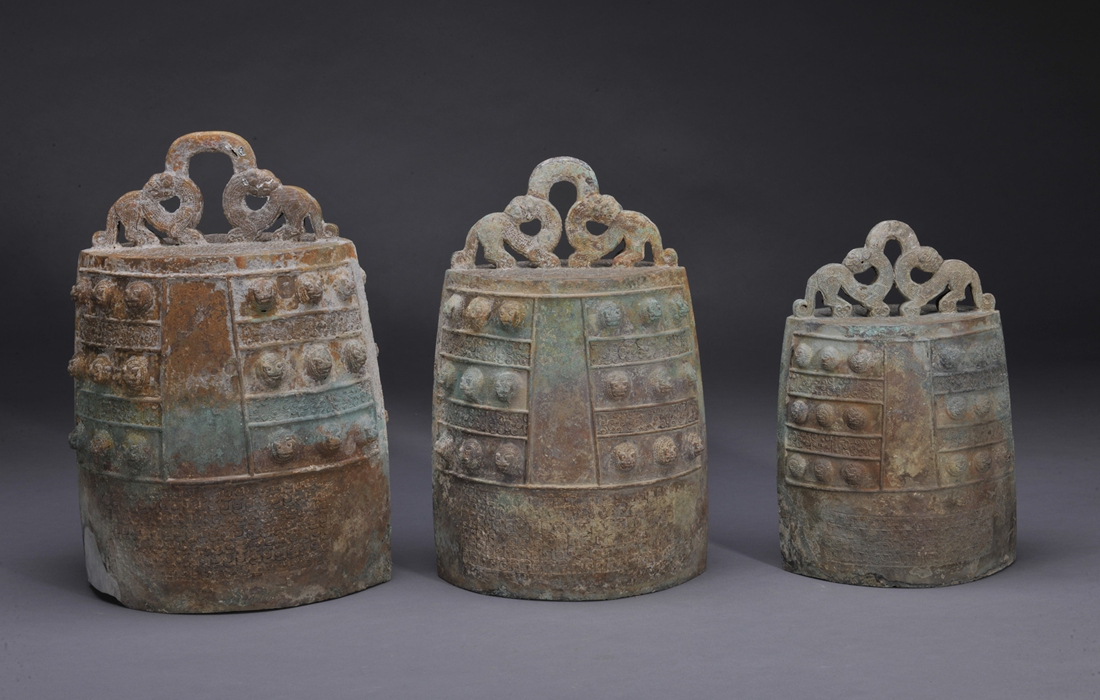 Photo shows the Xuyang graveyard site and discoveries in Yichuan county, Luoyang, Henan province. Cultural relics unearthed from the graveyard show a mixture of rituals, offering evidences to ethnic migration and integration during the Eastern Zhou Dynasty (770 BC- 256 BC). Photo: National Cultural Heritage Administration
Photo shows the Xuyang graveyard site and discoveries in Yichuan county, Luoyang, Henan province. Cultural relics unearthed from the graveyard show a mixture of rituals, offering evidences to ethnic migration and integration during the Eastern Zhou Dynasty (770 BC- 256 BC). Photo: National Cultural Heritage Administration 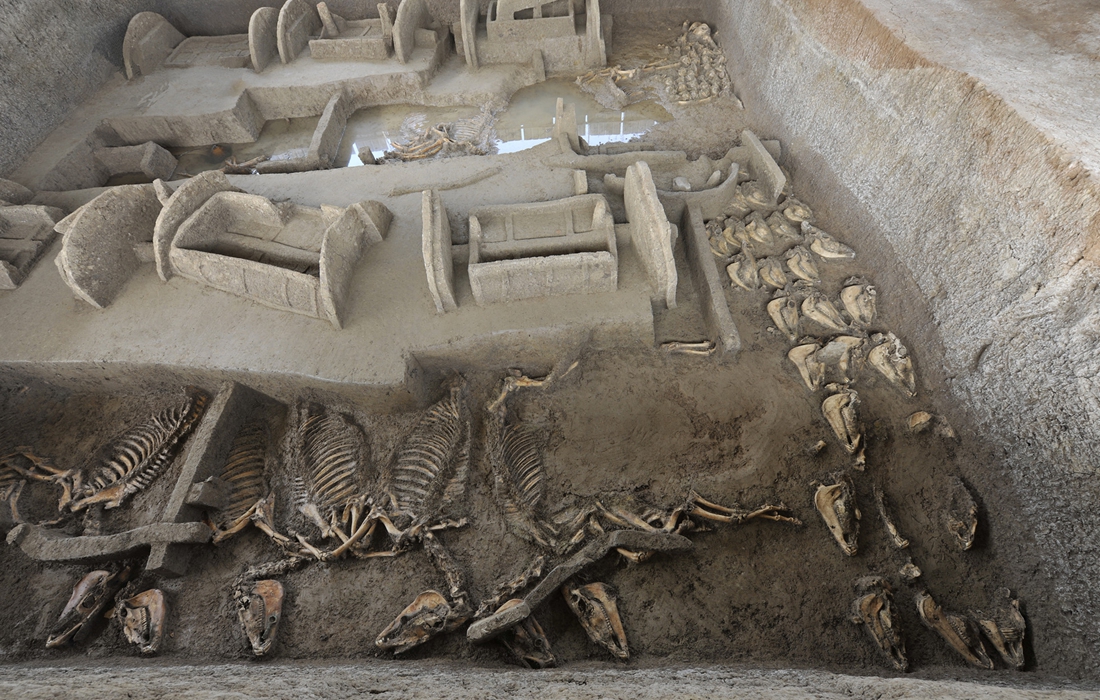 Photo shows the Xuyang graveyard site and discoveries in Yichuan county, Luoyang, Henan province. Cultural relics unearthed from the graveyard show a mixture of rituals, offering evidences to ethnic migration and integration during the Eastern Zhou Dynasty (770 BC- 256 BC). Photo: National Cultural Heritage Administration
Photo shows the Xuyang graveyard site and discoveries in Yichuan county, Luoyang, Henan province. Cultural relics unearthed from the graveyard show a mixture of rituals, offering evidences to ethnic migration and integration during the Eastern Zhou Dynasty (770 BC- 256 BC). Photo: National Cultural Heritage Administration 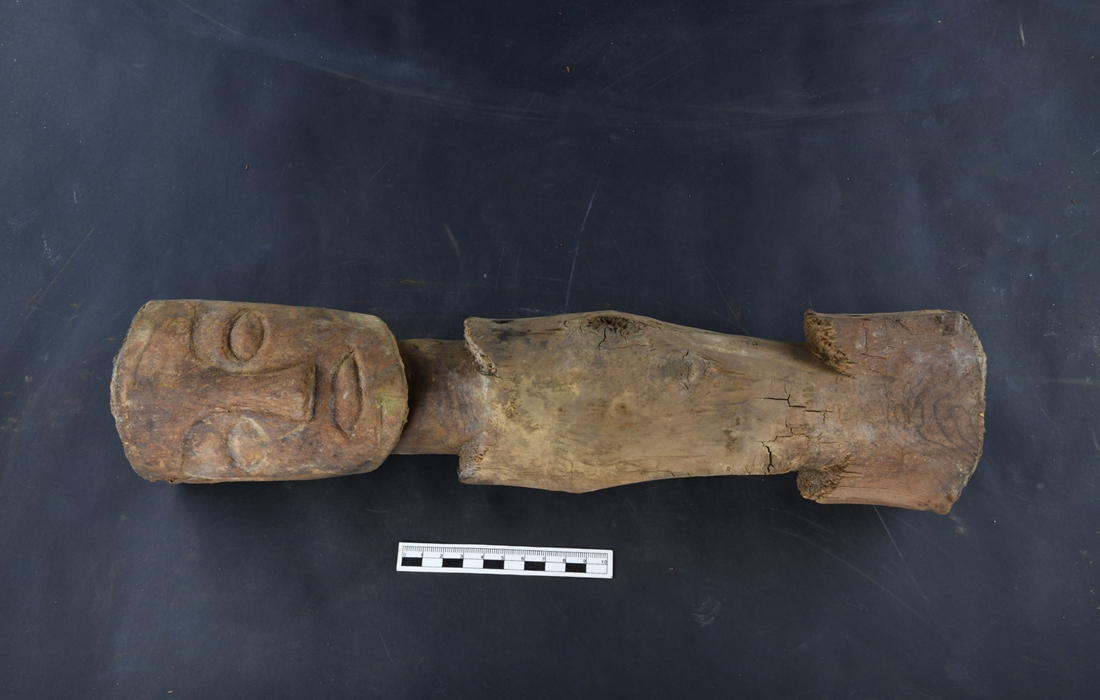 Photo shows cultural relics unearthed from the Sangsdar Lungmgo graveyard site in Zanda county, Ngari prefecture, Tibet autonomous region (4th century BC--7th century AD). As a key finding from the early history of Tibet, it offers evidence of Tibet’s communications with other regions including today’s Central China and Xinjiang. Photo: National Cultural Heritage Administration
Photo shows cultural relics unearthed from the Sangsdar Lungmgo graveyard site in Zanda county, Ngari prefecture, Tibet autonomous region (4th century BC--7th century AD). As a key finding from the early history of Tibet, it offers evidence of Tibet’s communications with other regions including today’s Central China and Xinjiang. Photo: National Cultural Heritage Administration 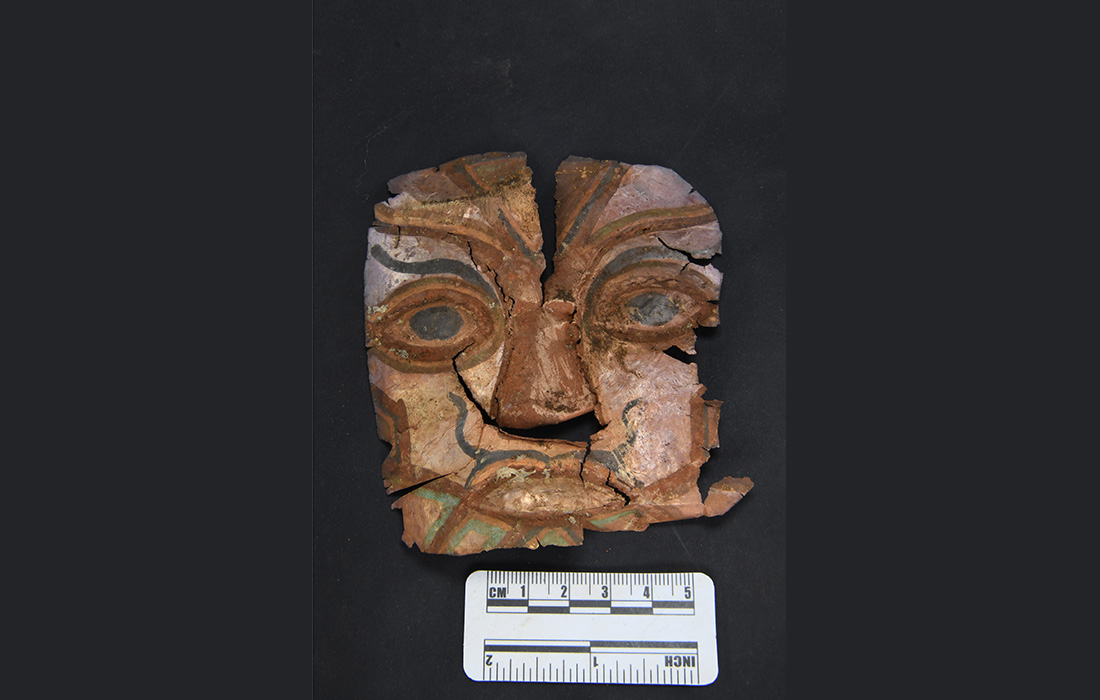 Photo shows cultural relics unearthed from the Sangsdar Lungmgo graveyard site in Zanda county, Ngari prefecture, Tibet autonomous region (4th century BC--7th century AD). As a key finding from the early history of Tibet, it offers evidence of Tibet’s communications with other regions including today’s Central China and Xinjiang. Photo: National Cultural Heritage Administration
Photo shows cultural relics unearthed from the Sangsdar Lungmgo graveyard site in Zanda county, Ngari prefecture, Tibet autonomous region (4th century BC--7th century AD). As a key finding from the early history of Tibet, it offers evidence of Tibet’s communications with other regions including today’s Central China and Xinjiang. Photo: National Cultural Heritage Administration 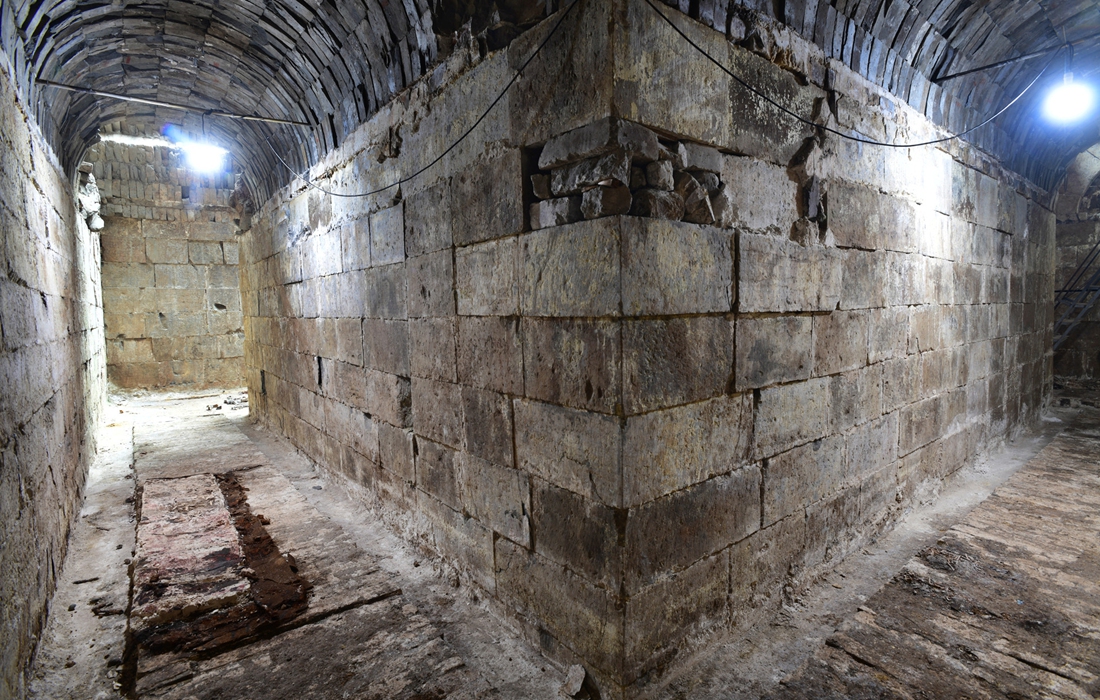 Photo shows the No 2 pit of Tushan Tomb and discoveries in Xuzhou, Jiangsu province. The tomb owner is a vassal King in the Eastern Han Dynasty (25 to 220). It is of academic value for mausoleum archaeology in China. Photo: National Cultural Heritage Administration
Photo shows the No 2 pit of Tushan Tomb and discoveries in Xuzhou, Jiangsu province. The tomb owner is a vassal King in the Eastern Han Dynasty (25 to 220). It is of academic value for mausoleum archaeology in China. Photo: National Cultural Heritage Administration 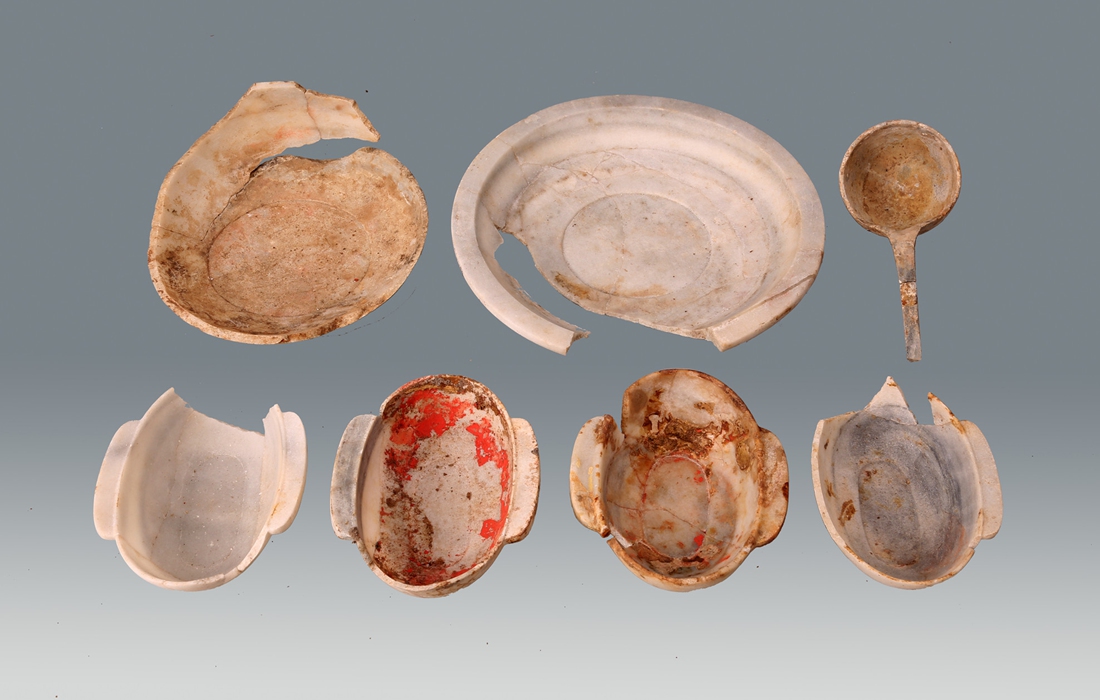 Photo shows the No 2 pit of Tushan Tomb and discoveries in Xuzhou, Jiangsu province. The tomb owner is a vassal King in the Eastern Han Dynasty (25 to 220). It is of academic value for mausoleum archaeology in China. Photo: National Cultural Heritage Administration
Photo shows the No 2 pit of Tushan Tomb and discoveries in Xuzhou, Jiangsu province. The tomb owner is a vassal King in the Eastern Han Dynasty (25 to 220). It is of academic value for mausoleum archaeology in China. Photo: National Cultural Heritage Administration 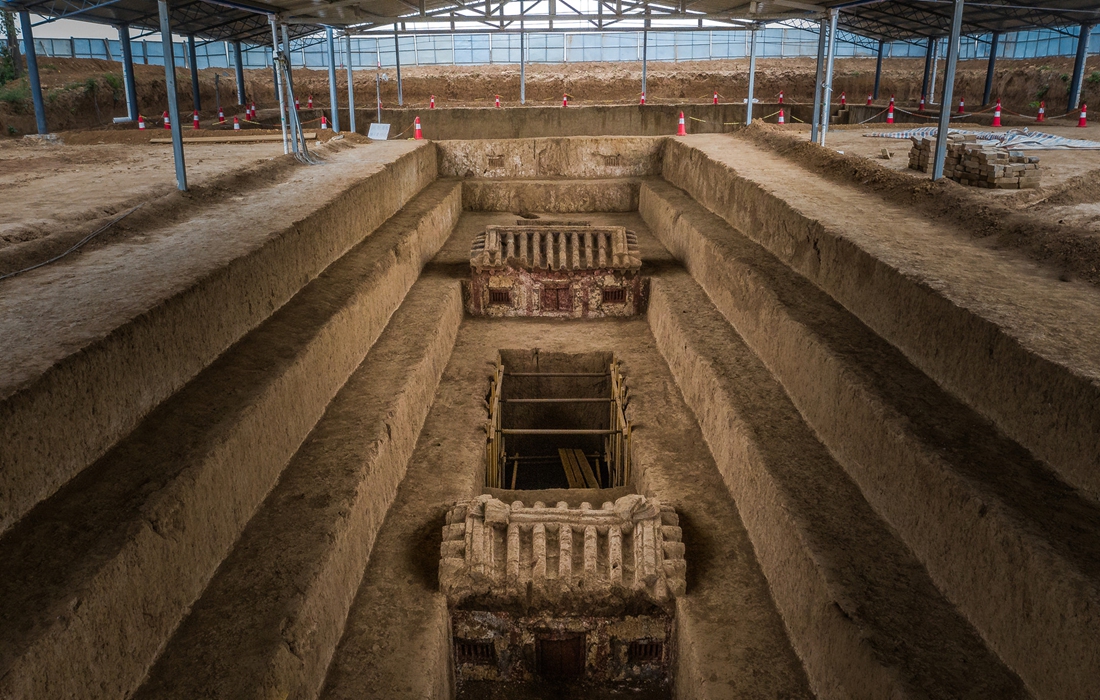 Photo shows the Shaolingyuan tombs site in Xi'an, Shaanxi province from the Sixteen Kingdoms period (304-409). Discoveries from the tombs show a mixture of Han Chinese culture and other ethnic cultures. Photo: National Cultural Heritage Administration
Photo shows the Shaolingyuan tombs site in Xi'an, Shaanxi province from the Sixteen Kingdoms period (304-409). Discoveries from the tombs show a mixture of Han Chinese culture and other ethnic cultures. Photo: National Cultural Heritage Administration 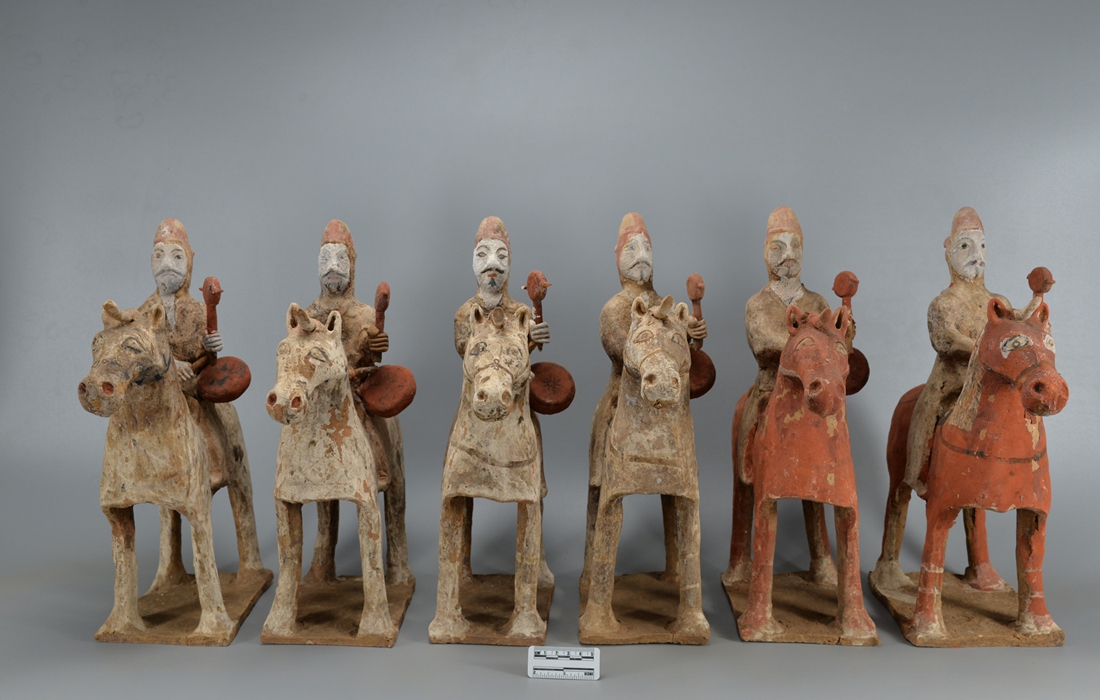 Photo shows the Shaolingyuan tombs site in Xi'an, Shaanxi province from the Sixteen Kingdoms period (304-409). Discoveries from the tombs show a mixture of Han Chinese culture and other ethnic cultures. Photo: National Cultural Heritage Administration
Photo shows the Shaolingyuan tombs site in Xi'an, Shaanxi province from the Sixteen Kingdoms period (304-409). Discoveries from the tombs show a mixture of Han Chinese culture and other ethnic cultures. Photo: National Cultural Heritage Administration 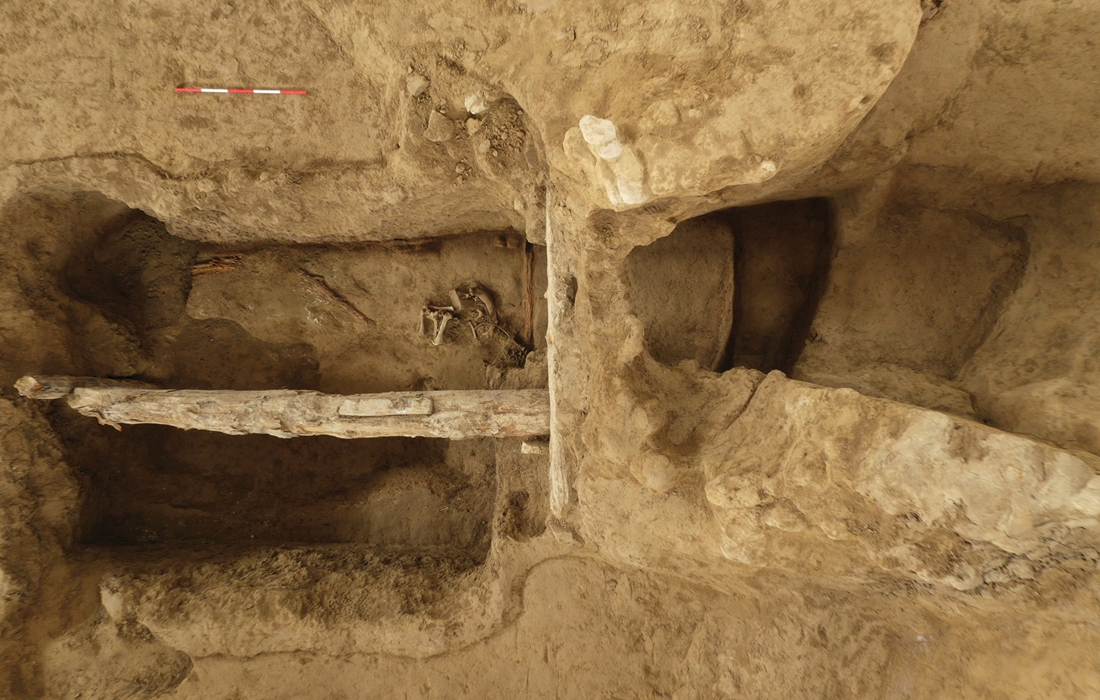 Photo shows Reshui graveyard site in Dulan county, Haixi Mongolian-Tibetan autonomous prefecture, Qinghai province. New discoveries unveil cultural communications between Han culture and ethnic cultures during the Tang Dynasty (618-907). It also offers evidence for study on the Silk Road. Photo: National Cultural Heritage Administration
Photo shows Reshui graveyard site in Dulan county, Haixi Mongolian-Tibetan autonomous prefecture, Qinghai province. New discoveries unveil cultural communications between Han culture and ethnic cultures during the Tang Dynasty (618-907). It also offers evidence for study on the Silk Road. Photo: National Cultural Heritage Administration 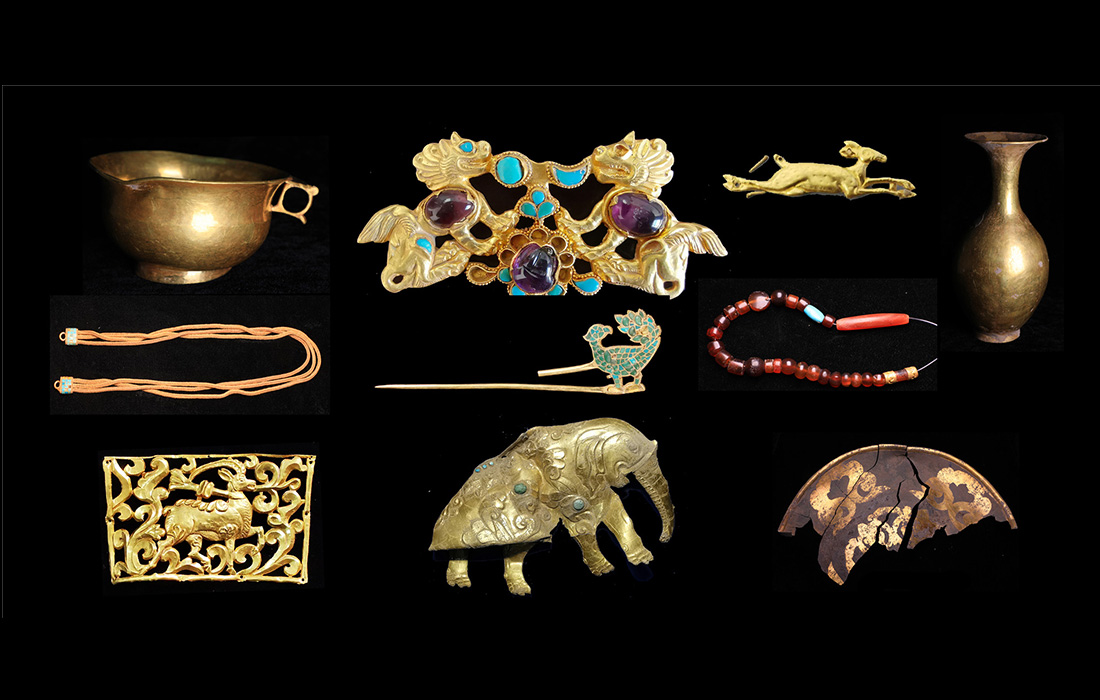 Photo shows Reshui graveyard site in Dulan county, Haixi Mongolian-Tibetan autonomous prefecture, Qinghai province. New discoveries unveil cultural communications between Han culture and ethnic cultures during the Tang Dynasty (618-907). It also offers evidence for study on the Silk Road. Photo: National Cultural Heritage Administration
Photo shows Reshui graveyard site in Dulan county, Haixi Mongolian-Tibetan autonomous prefecture, Qinghai province. New discoveries unveil cultural communications between Han culture and ethnic cultures during the Tang Dynasty (618-907). It also offers evidence for study on the Silk Road. Photo: National Cultural Heritage Administration 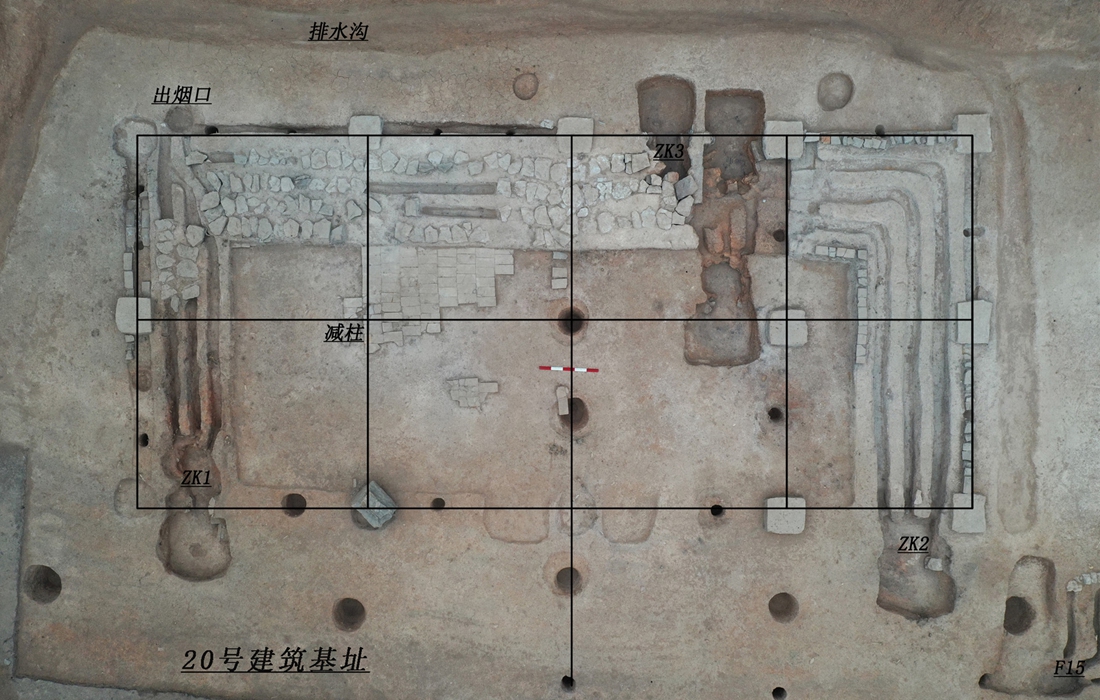 Photo shows Mopancun city ruins in Tumen, Jilin province, dating back to the early 13th century. The ruins are from the capital city of the regional regime of Dongxia, which existed from the Jin (1115-1234) to Yuan (1271-1368) dynasties. Photo: National Cultural Heritage Administration
Photo shows Mopancun city ruins in Tumen, Jilin province, dating back to the early 13th century. The ruins are from the capital city of the regional regime of Dongxia, which existed from the Jin (1115-1234) to Yuan (1271-1368) dynasties. Photo: National Cultural Heritage Administration 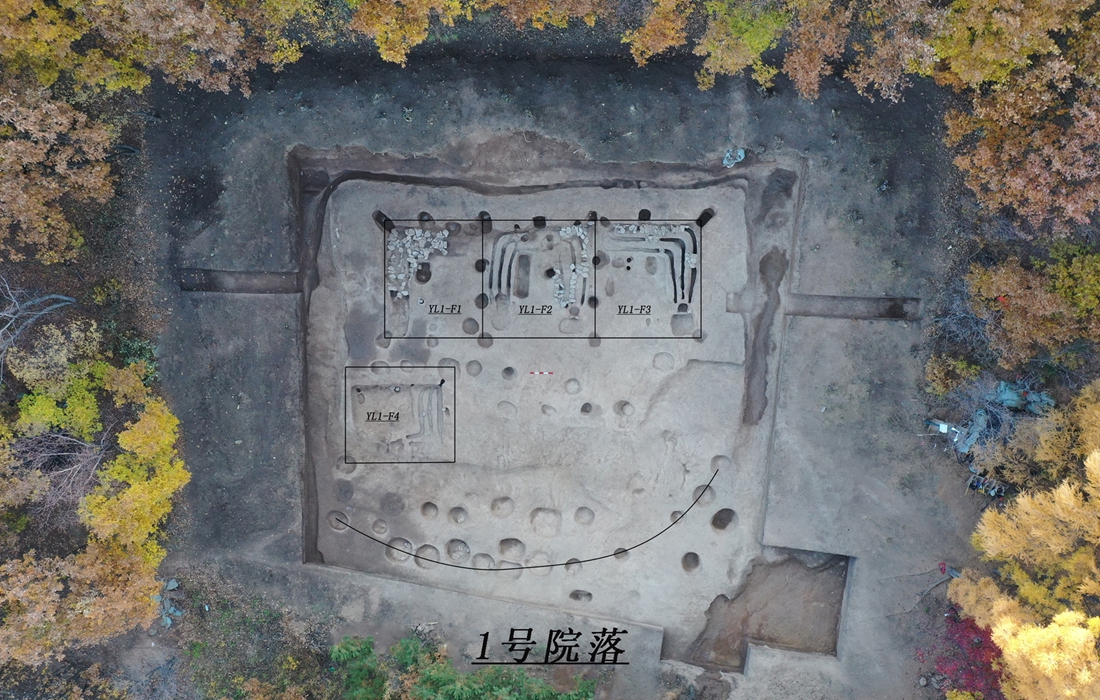 Photo shows Mopancun city ruins in Tumen, Jilin province, dating back to the early 13th century. The ruins are from the capital city of the regional regime of Dongxia, which existed from the Jin (1115-1234) to Yuan (1271-1368) dynasties. Photo: National Cultural Heritage Administration
Photo shows Mopancun city ruins in Tumen, Jilin province, dating back to the early 13th century. The ruins are from the capital city of the regional regime of Dongxia, which existed from the Jin (1115-1234) to Yuan (1271-1368) dynasties. Photo: National Cultural Heritage Administration





















